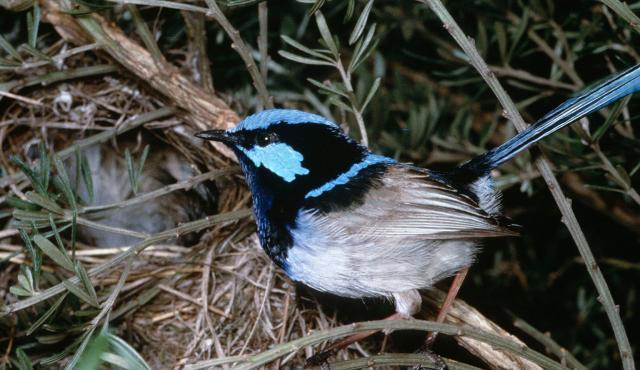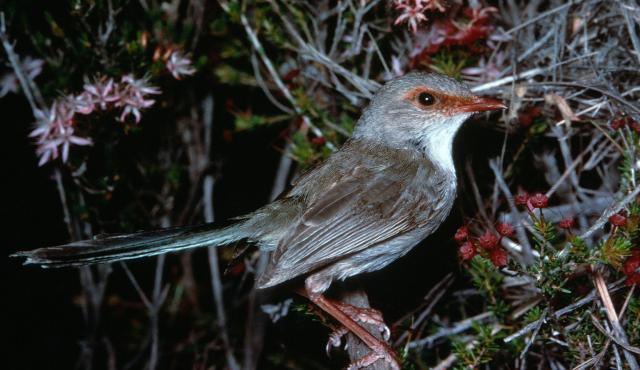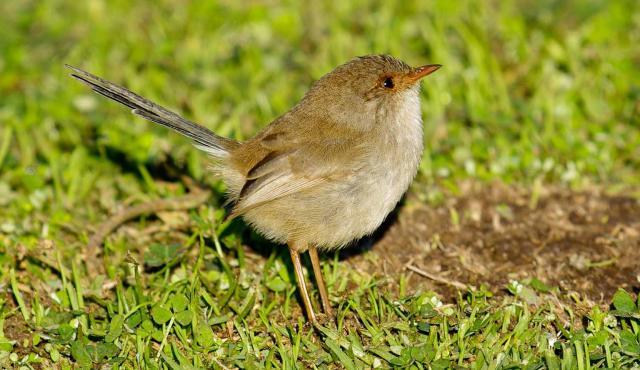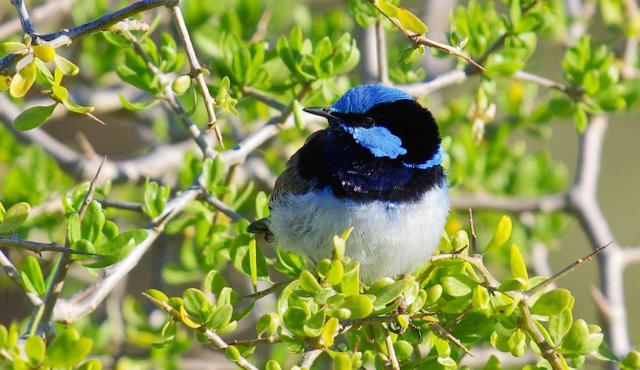




Superb Fairy-wren
Malurus cyaneus
| Details | |
|---|---|
| Type | Bird |
| Group | |
| Other Common Names | Blue Wren, Superb Blue Fairy-wren, Superb Blue Wren |
| Biology | Breeding season is from September through to December. The female constructs a dome-shaped sphere out of grasses lined with feathers. Clutch size is 3-4 although these eggs are not always fathered by the same male. The female incubates the eggs for 13-15 days. The family group will help with the feeding of the young. |
| Distinctive Markings | Males have a blue-black plumage with a blue tail. Females have a brown tail and orange-red area around the eye. |
| Taxonomy | |
|---|---|
| Phylum | Chordata |
| Class | Aves |
| Order | Passeriformes |
| Family | Maluridae |
| Genus | Malurus |
| Species | cyaneus |
Source: Atlas of Living Australia
Adult males have a breeding and non-breeding plumage. Older males may retain their breeding plumage throughout the year.
| Interesting Facts | |
|---|---|
| Diet | Carnivore. Insects and other small arthropods. Feeding occurs in small social groups. |
| Habitat | Habitat consists of suitable dense cover of grass, bracken and low shrubs. Also found in urban parks and gardens. |
| Native Status | Native to Australia |